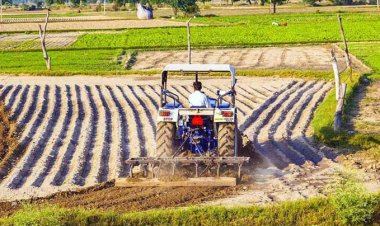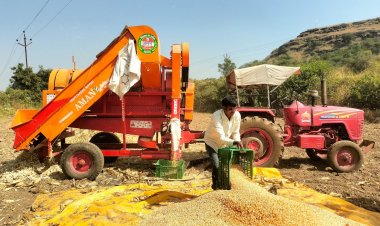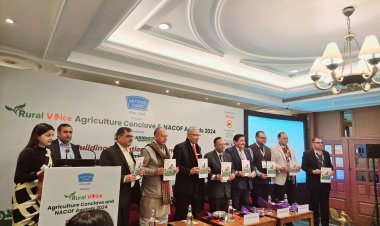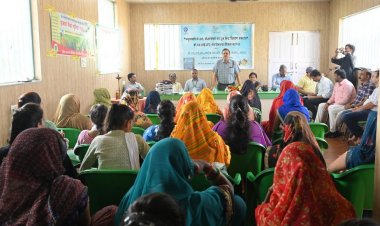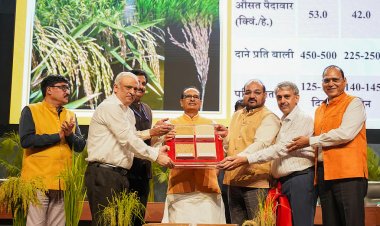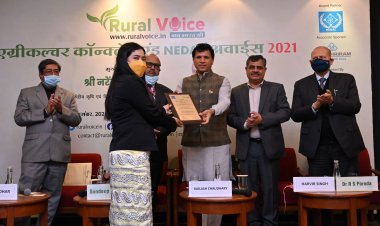India needs a food systems approach — a unique one best suited to its requirements
The conventional Western model of a ‘Food System’ relies on a Production-Processing-Value Chain-Markets linkage. When Inclusiveness, Health & Nutrition and Sustainability pillars are introduced into this model, the model begins to crack! Understandably, one global system will not work in the world; one single system may not work in India as well. Indian food systems are unique for their diversities — of production, consumption, trade, cultural and environmental challenges. India’s food system, therefore, will have to draw upon global best practices and redesigned accounting for regional variations and innovations.

The United Nations Food Systems Summit in 2021 did not make any big waves. Some critics went to the extent of saying it fizzled out. It was a global event of scale that failed to excite member countries to start designing transformative ‘food systems’. Probably, the concept itself was not fully understood, and not properly explained.
Transforming existing food systems is akin to repairing and remodelling a sailing ship! Holes need to be plugged, interiors refurbished and engine capacity augmented; while the ship remains afloat and continues on its journey. Does this mean that existing systems are fine and nothing needs to change? Definitely not! What seems to intimidate policymakers is the sheer challenge of the ‘how’. Not attempting the transformation, in my view, is not an option, though inertia is convenient.
It was in this background that Bharat Krishak Samaj organized a ‘Food Systems Dialogue’ trying to take the first shot at changing the narrative in favour of a systems approach as different from the current silos approach. The dialogue (15-16 November 2022) had ten major tracks all piloted by reputed expert organizations, national and international. It was designed as a ‘dialogue’, and not as a conference or a summit. It was about listening and learning. It was about understanding the various dimensions of any transformation, trade-offs in these actions, possible impacts and about effective and least harmful pathways. This article, however, is not about the ‘dialogue’, but about the need for a unique, India-specific food system.
The conventional Western model of a ‘Food System’ relies on a Production-Processing-Value Chain-Markets linkage. When Inclusiveness, Health & Nutrition and Sustainability pillars are introduced into this model, the model begins to crack! Understandably, one global system will not work in the world; one single system may not work in India as well. Indian food systems are unique for their diversities — of production, consumption, trade, cultural and environmental challenges. India’s food system, therefore, will have to draw upon global best practices and redesigned accounting for regional variations and innovations. No doubt, it is a daunting task and hence the reluctance to even accept the need for a change! Continuing with the existing system built on the ‘green revolution model’ is bound to run into ‘rough weather’ given the climate variability scenario. Add to this, concerns of farm incomes, depleting natural resources and challenges of under-nutrition. The need for changes in the existing system is obvious. What, then, could be the main pillars on which such a transformation can be built?
Seven broad areas deserve immediate attention:
- Address concerns around food and nutrition, livelihoods and resilience in agriculture: India needs healthy and affordable diets for its people. Food security initiatives have been based on intensive production, extensive procurement and efficient distribution. This model did ensure that there is enough (and more) rice and wheat for our people. Continuing on this track with the same over-emphasis on wheat and rice is unlikely to give better nutritional outcomes. Given the twin constraints of limited cultivable land and depleting natural resources, a shift in focus to nutri-cereals, pulses, fruits and vegetables, dairy, poultry, etc. is critical from both nutrition and livelihood perspectives. Though agriculture has so far withstood the impact of natural calamities at the macro level, livelihood security and rainfed agriculture have been under severe stress whenever weather events occurred. Given the increasing climate variability, more resilience has to be built in through necessary changes in policy and instruments of intervention.
- Build sub-systems for climate adaptation: Climate variability has become the biggest challenge to farmers. While our policy responses largely focus on macro-level food security concerns, the livelihood security of farmers in the distressed regions has not received the attention it deserves. To reduce inequality, policies need to shift from the National Food Security focus to farmer-centric livelihoods and micro-level food security with concomitant allocations in the budget. This is particularly relevant for rainfed area farmers. Our sub-systems — technical support and extension systems, input planning, market support and risk mitigation — do not respond adequately to weather-induced challenges. This has to do with two factors: centralized planning and inadequate response/mitigation mechanisms. These need urgent attention.
- Conserve natural resources and incorporate time-tested traditional practices: The Green Revolution remained a success story, thanks to some parts of India, in terms of meeting the food security needs of the country. Over a period of time, unsustainable use of natural resources aided by misplaced financial incentives has created pressure on the existing natural resources — soil, water, and agroecology, to name a few — and has placed a big question mark on the sustainability of such operations. Policies that were good ‘green revolution’ continued largely because of an apprehension that any change may affect the food security of the country and create unhappiness among those farmers who have benefited from these policies. However, there were a large number of other resource-poor farmers who practised natural farming (by whatever other names it may be called) that were left out of the benefits of the ‘incentives regime’ of the Government since they did not use any of the inputs in the ‘Green Revolution’ model: water, fertilizers, hybrid seeds or pesticides. Farmers who conserve natural resources need to be incentivized in some form: collective or individual.
- Reduce food loss and waste: The quantity of food lost and wasted is unacceptably large. While different estimates are available for food loss and waste, all of them indicate unacceptably large numbers. Food loss, to me, is a bigger challenge in terms of technology, transport, storage and management. Any intervention to reduce food loss will have to be crop- and geography-specific. It will be a win-win for all, particularly for farmers. Food waste requires a behavioural change and, if required, some penal provisions as well.
- Create circular food chains instead of linear systems: A lot of theory exists about circular food systems. Circular food systems do save time, energy and money. The starting point has to be local loops of production and linkage to local markets. This has the advantage of creating demand for local produce, thereby contributing to local prosperity. Current policies do not encourage such a system.
- Ensure sustainable incomes for farmers: Farming continues to lose its economic importance in the share of GDP, but continues to support about 50 per cent of the population. For the farmer on the ground, it is increasingly becoming unprofitable and unpredictable. Many of them remain farmers for want of any other option. If farming does not provide a dignified livelihood to the people involved in it, there is no way healthy and nutritious food can be produced for the people. A concerted effort and a well-thought-out policy prescription to sustainably increase farmers’ incomes need to be ‘grounded’ at the earliest. Such a plan should not be subject to ad hoc reactions to consumer price inflation and urban consumer prejudices.
- Focus on governance: A transformed food system requires a new governance architecture. Discussions on food and agriculture often ignore governance issues. Knowledge, skills and capacities at the local level have not received the attention required for an effective locally relevant innovative system. A transformative arrangement involving the strengthening of local-level institutions would require much more. Ignoring governance issues in the overall food system architecture can lead to major failures.
Undoubtedly, India needs to transform its food system. How the transformation pathways are designed will decide its success.
(T Nandakumar is a former Secretary, Food & Agriculture, Government of India. The views expressed here are his own.)



 Join the RuralVoice whatsapp group
Join the RuralVoice whatsapp group


















